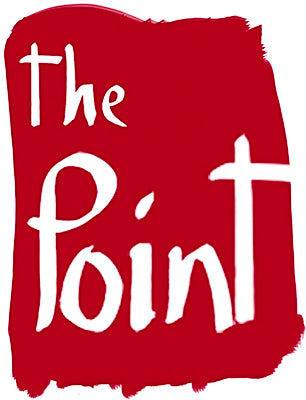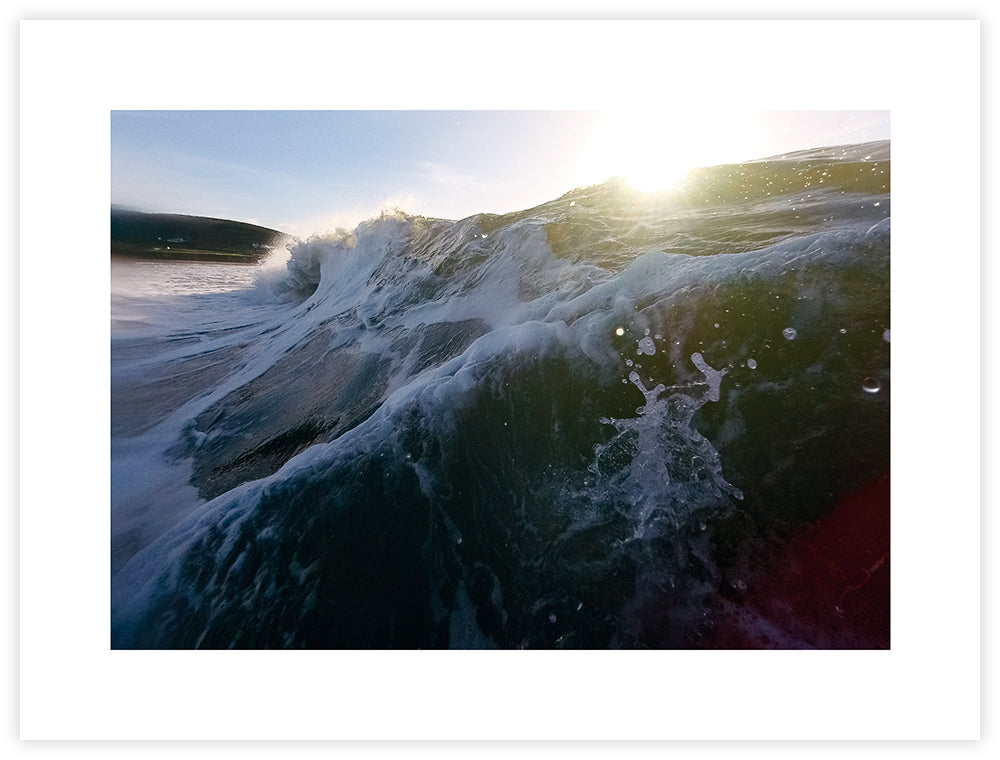I’ve been torn with making prints. It fits into the very systems of production and consumption which is driving climate change and ultimately systems collapse. So how do I square that circle against the need to make money? It’s a dilemma I’ve been wrestling with, feeding the very system I’ve been questioning, the system that ultimately is driving our climate crisis.
What is the purpose of the photograph? This is something I contemplated before I even began down the current road of considered consumption but what is the purpose of these prints? Essentially, they are aesthetic. To be looked at for their own sake. They can be meditative, calming, an ode to the sea but they can mean different things to different people. Some have an affinity to a sense of place. That’s our bench is a comment people often relate, evoking memories of loved ones lost. And when we’re not in the sea, we can self-impose ourselves into and onto a position to ride the waves we see before us. These images have value outside of the money I can make which we, as a family need and this offsets my dilemma of adding to a system of production and consumption. I can also make better choices on paper, packaging, inks, energy, and the like and this marks my way forward in working towards what Meadows and her colleagues termed the state of equilibrium (1).
It's a perspective which aligns more with green growth rather than degrowth because ultimately, as claimed it is the latter which will work towards combating the climate crisis, as the former still relies on resources and relations of control and extraction but what does degrowth mean? For me, make less against a backdrop of making hardly anything at all? That still leaves the constraints on income and contextualised to where I live, my impact is relatively insignificant but that doesn’t mean I shouldn’t reflect on mindful making.
Living in Croyde, I see the excessive manifestations of economic growth, and I can recognise it as being what Döring and Aigner-Walder cite as, “the source for manifold undesirable social developments”, yet these developments which include tendencies towards social acceleration, the decline of meaningful activities, and the increase of disaffected work (2) seem so ingrained in our society. Living in Croyde may epitomise this notion but it is evident throughout the lens of my life, particularly around the experiences of disaffected work.
At the moment I am looking to alternatives as the need to stabilize an income grows. I look towards the environmental sector, and I’m faced with a catch 22 situation. There are jobs out there but without the experience I cannot get the job and yet without the job I cannot gain the experience. Internships are available but working for free has its costs. Then there’s other considerations, my partners work, the children, school, even the dog. Working from home, selling what I make brings balance to these factors, enabling what I consider to be a state of equilibrium. Then there’s the most selfish consideration of all, my desire to surf. When it’s on, and I don’t mean double over head and pumping, I’m talking just waves, it’s on and I have the freedom to surf. That freedom is priceless but again comes with a cost but when I look to my peers, friends who are no longer with us, or no longer able, I am reminded of how precious and unpredictable life can be. And I’m not looking from without, I’m looking from within, from experience. An experience which left an indelible mark, shaped my worldview and led me to where I am today.
References
- Meadows et al. (1972) The Limits to Growth. Available at: The Limits to Growth. A report for the Club of Rome's project on the predicament of mankind. (secureserver.net)
- Döring, T and Aigner-Walder, B. (2022) The Limits to Growth – 50 Years Ago and Today. Available at: Doring iThe_Limits_to_Growthi_—_.pdf

